20 Oct How to Use Google Trends for YouTube via @natalieannhoben
Google Trends can provide a wealth of insights that can help guide keyword and content strategies.
In this article, you will learn a few ways to use Google Trends to help gain insights for YouTube and your video content strategy.
What Does Google Trends Data Represent?
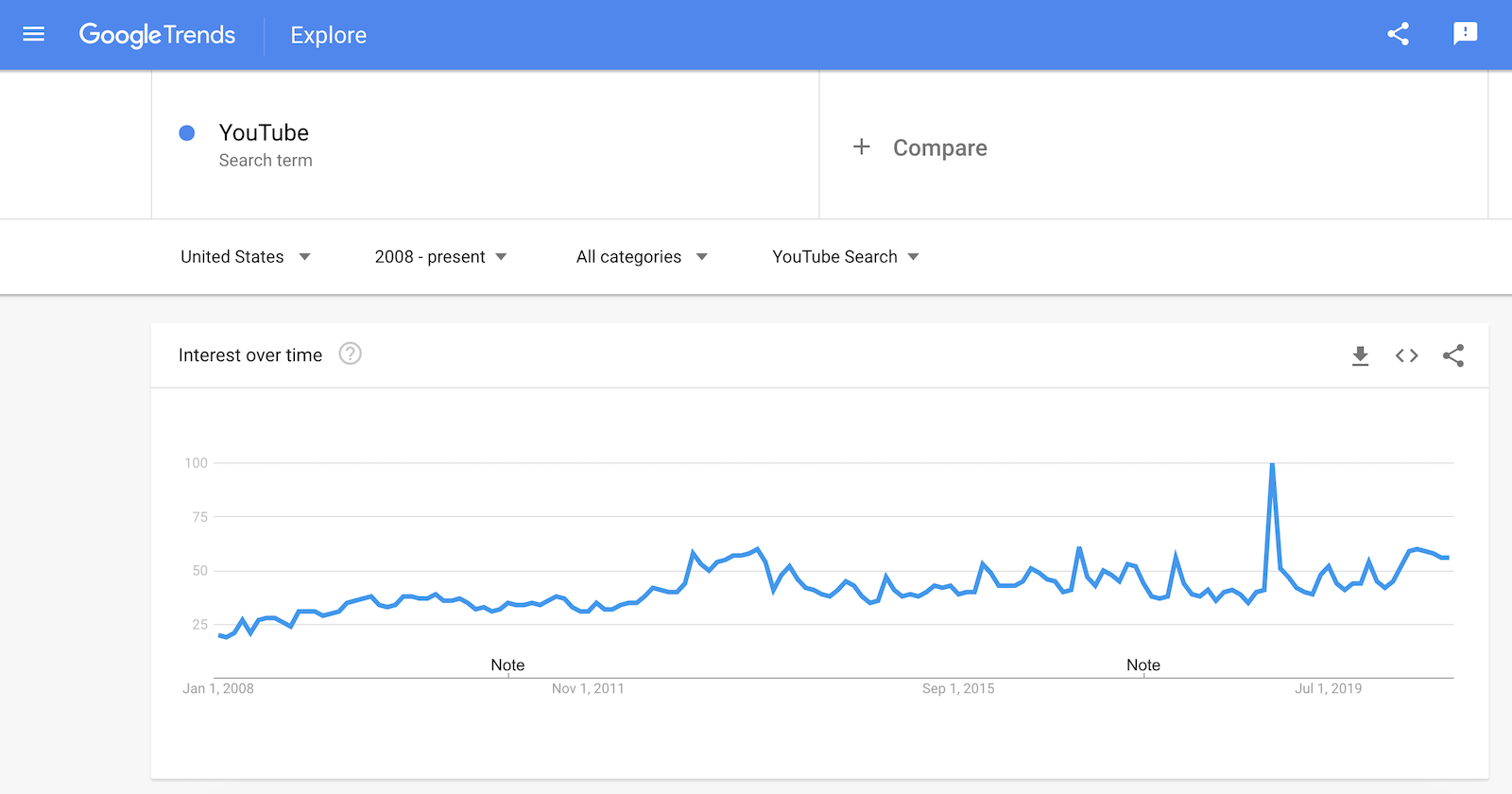

There is a good amount of confusion over what data is actually represented within Google Trends.
Google Trends does not represent actual search volume for a specific query, but rather the relative popularity of a search term.
Here’s the explanation from the Google Trends Help Center:
“Trends adjusts search data to make comparisons between terms easier. Each data point is divided by the total searches of the geography and time range it represents, to compare relative popularity.”
In other words, relative popularity is the ratio of a query’s search volume to the sum of the search volumes of all possible queries.
“The resulting numbers then get scaled on a range of 0 to 100 based on a topics proportion to all searches.”
Understanding Google Trends Data & the YouTube Algorithm
In order to successfully use Google Trends to generate video content ideas, it’s important to understand:
- How Google Trends displays data.
- The YouTube algorithm.
Google Trends
As mentioned above, a common misconception with Google Trends is that the tool reports on the search volume of various keyword terms and topics.
In actuality, Google Trends reports on normalized search data to make comparisons between terms more simplistic.
According to Google, the data is normalized in the following manner:
- Each data point is divided by the total searches of the geography and time range it represents to compare relative popularity.
- The numbers that result are then scaled on a range of 0 to 100 based on a topic’s proportion, or relation relatively, to all searches on all types of various topics.
- Various regions that show the same amount of search interest for a specific term don’t always have the same total search volumes.
So essentially, Google Trends shows interest in a particular topic from around the world.
YouTube Algorithm
Want to use Google Trends to help optimize content for YouTube?
Then it is crucial to understand some of the inner workings of Google’s algorithm.
YouTube’s algorithm focuses heavily on individual video performance. This includes:
- Click-through rates.
- Average watch time
- Number of likes, dislikes, comments, and shares.
- How popular a video is (velocity a.k.a., rate of growth).
- How new a video is (new videos often get preference).
- Frequency of often a channel uploads new videos.
- User session on the YouTube platform.
How to Use Google Trends for Your Video Content Strategy
1. Use Google Trends Categories
You can use Google Trends’ category feature to help see topics that fall in line with what your channel covers.


Even if your channel doesn’t directly fall in-line with any of these categories, you can see related topics that may still pertain.
For example, looking at the “food & drink” category, you can see that there are some overlapping topics. Unsurprisingly, currently, COVID-19.
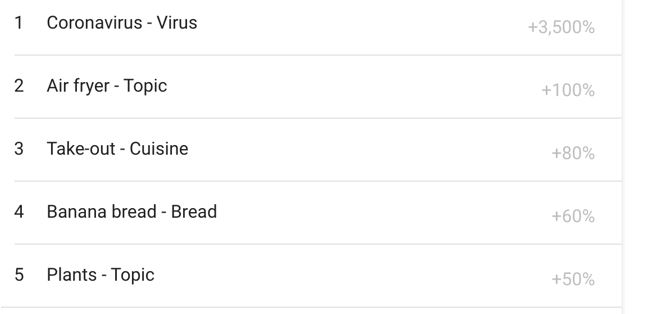

This is a great way to see high-level topics that currently trending in search and identify any overlap that may be relevant for video content for your channel.
If you want to see more granular details about what exactly is trending within each of these topics, you can click into each of them to see relevant articles that can provide more insights on the specifics.
2. Look at Various Search Types
Another handy aspect of Google Trends is that you can identify trending topics across various forms of search.
You can also see them by standard web search and YouTube search.
Looking at the standard Google search engine is helpful for generating video content ideas, but you can get even more insights by checking out what is currently trending within YouTube search itself.
You may notice that some similarities as well as differences that can help you to better create video content specifically.


YouTube Search
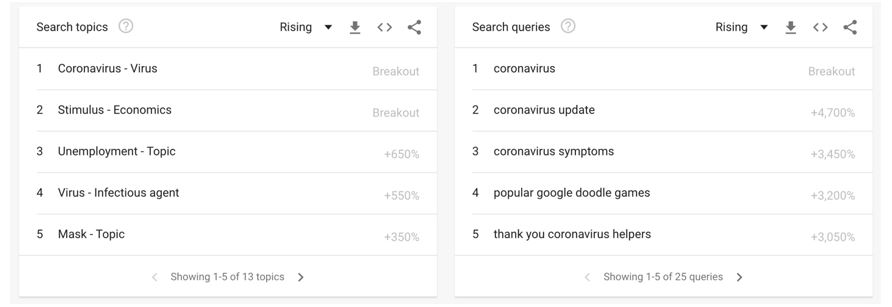

Web Search


You can see some similarities and differences between web search and YouTube search.
Having an even more laser-focused view on what is trending in YouTube search, and not just search in general, helps to prioritize your content creation.
3. Analyze Seasonal Trends
Another thing to consider when looking at Google Trends for video content ideas is seasonal patterns.
By identifying these, you can schedule out your content creation and prioritize it.
Seasonality will obviously vary by topic. Some trends, we know are definitely seasonal and can therefore prioritize around them.
Take, for example, “eggnog recipe”:


Other trends, are situational, and we may not have anticipated them, but can clearly get more insight into these by looking at Google Trends data.
Let’s take a look at the query “how to cut hair.”
Web Search


YouTube Search
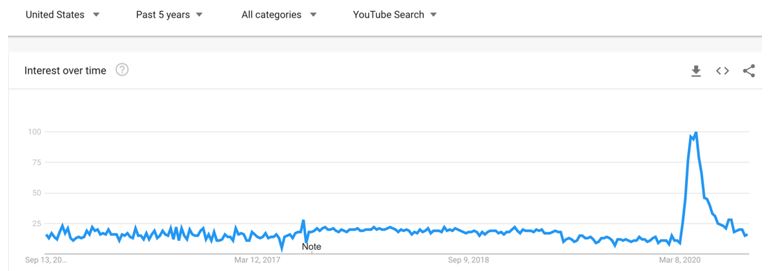

This is particularly helpful as well, as YouTube’s algorithm will prioritize trending and recent videos.
If you can identify a seasonal topic, or more of a topic that is trending due to something situational, that can greatly help to capitalize on that aspect of YouTube’s algorithm.
This can then get your video in front of more eyeballs.
4. Find Timely Keyword Targets
Google Trends can be particularly helpful for keyword research.
While, as we noted earlier, Google Trends doesn’t report on search volume, it does report on the overall popularity of particular topics.
Also, Google Trends can help give you more insight into which general keywords, or topic clusters, to target because of the trended data.
You can easily see which topics are trending upward in popularity and downward over time.
Downward: “At home workouts”
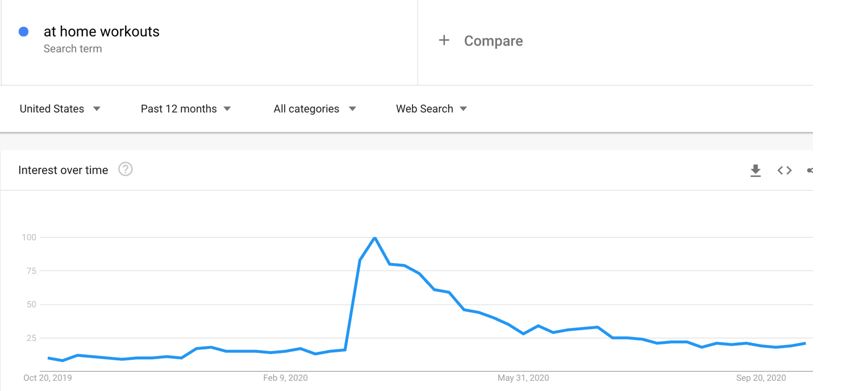

Upward: “Early voting by state”
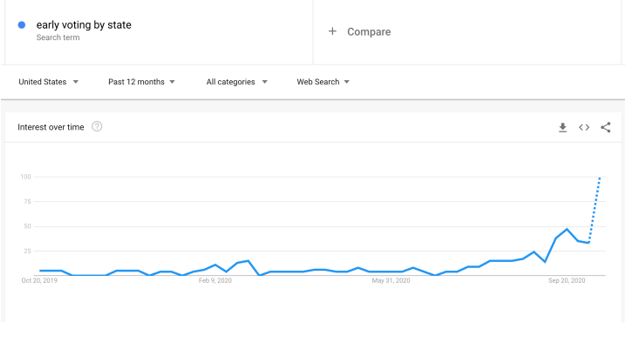

In addition, you can look at the related topics are these timely topics to help build out optimal content sub-topics.
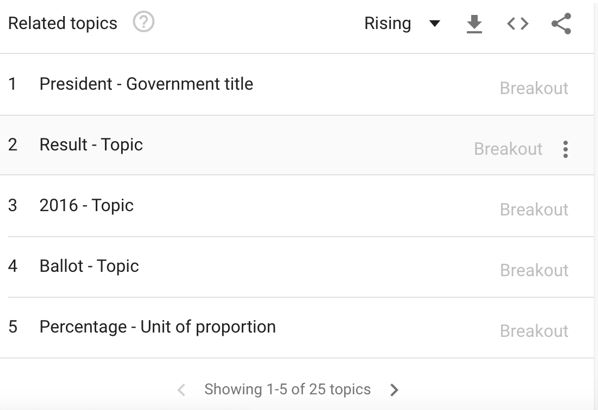

5. Observe Topical Trends by Region
Google Trends can help to identify content topics that vary in popularity by state or region.
This can help guide hyper-local content strategies for local optimization purposes.
You can create useful content specifically aimed at people in these locations:


You can also drill down further and use a location comparison tool to see any similarities or differences.
Looking at this can help you to prioritize content by region.
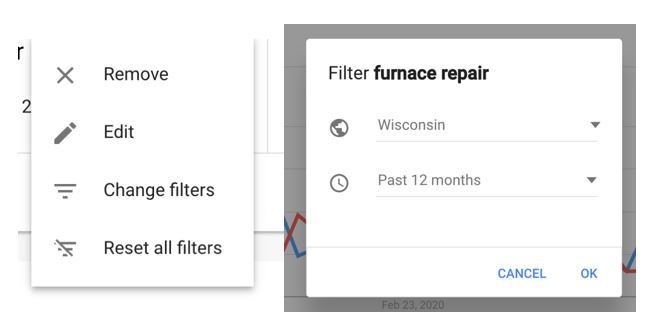
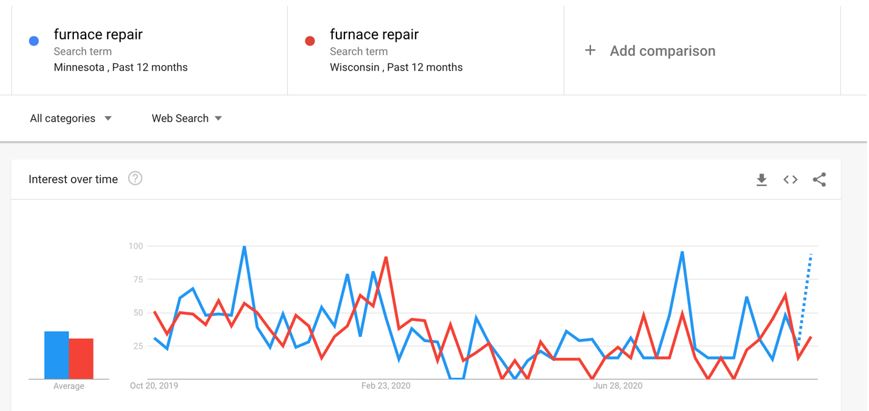


If you noticed even a minor or substantial difference in the timeliness of a topic by region, you can prioritize the timeline of the content for those areas.
Conclusion
Google Trends can be very useful for keyword research, content calendar planning, and an array of other organic tasks and projects (as well as paid ones) – especially in a year where trending topics and typical seasonality look different for many businesses.
More Resources:
Sorry, the comment form is closed at this time.